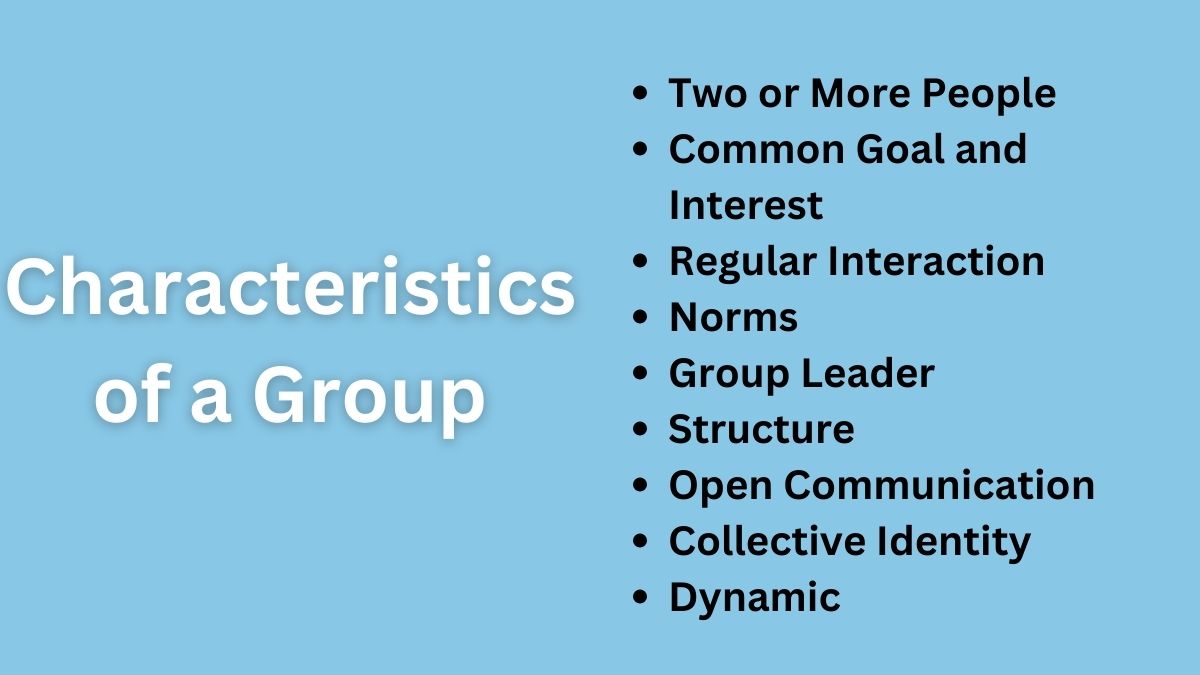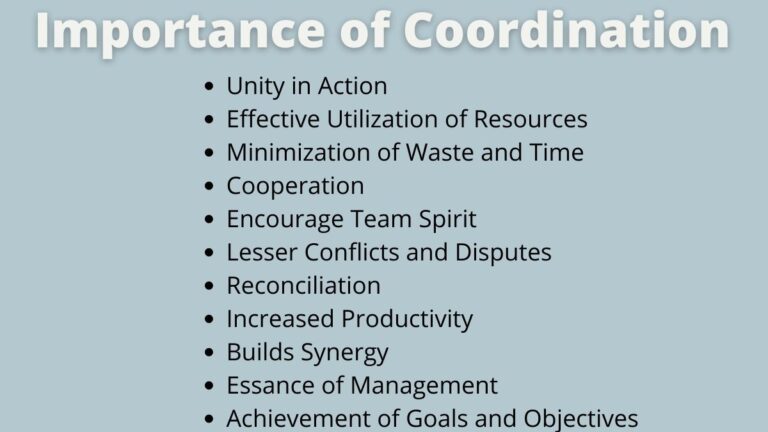9 Characteristics/Features of a Group [Explained]
Characteristics of Group
A group is called when two or more people come together, interact with each other, and share their efforts to achieve a common goal. The following are the main characteristics/features of a group.
Two or More People
For a group to be there must be two or more people. You can not form a group alone. A group requires to have some people in it who share their opinions and collectively aim to achieve the desired goals.
Common Goal and Interest
Usually, a group is formed to accomplish a common goal. Among all the members of the group they have one thing in common, they share at least one similar goal. Their interest also matches with one another.
Regular Interaction
Group members should regularly interact with each other. Without regular interaction, a group would be static. For the accomplishment of the shared goal interaction among group members is necessary. And, they may stop interacting when the goal has been accomplished.
Norms
Although group members exercise autonomy, they are not independent to act in whatever way they want. Group members have to follow certain rules to interact with one another. They have to consider norms i.e. rules to behave within the group.
Group Leader
For a group to be effective there should be a group leader. Leadership within the group ensures clarity in what a member should do and what should not in order to achieve the common goal.
Structure
An effective group also has a structure based on the roles and positions held by the members. In which, a leader holds the top position, and all group members have to follow the leader’s instructions. Group structure also clarifies reporting relationships within the group.
Open Communication
The practice of open communication has prevailed in groups. In formal groups, there may be some limitations to practicing open communication. However, in informal groups, open communication is highly encouraged.
Collective Identity
Group members share a collective identity. The degree to which group members understand and are aware of each other differentiates a group from an aggregation of individuals. The understanding, harmony, and togetherness among group members establish their collective identity.
Dynamic
Groups are dynamic in nature. They are flexible to changing situations of the organization and the environment outside the organization.
Read Next: Stages of Group Formation
Sajan Kushmi is a content writer with more than 4 years of experience. He holds BIM Degree. He write on the topics related to Management, Marketing, and Entrepreneurship.






